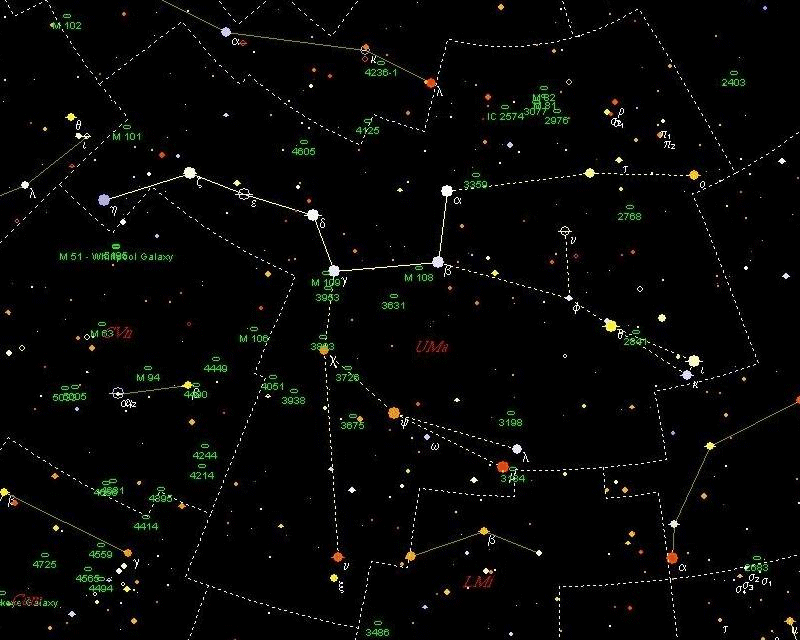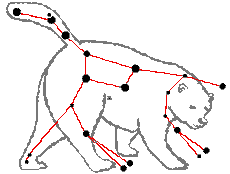
Ursa Major Project

Chart used by permission from SkyMap Pro
Ursa Major (Ursae Majoris), the Great Bear, more commonly
known as the Big Dipper is probably one of the best known constellations.
Generally it is the first constellation that people learn to recognize
in the Northern Hemisphere. It can be seen most of the year from the northern
lattitudes.

We are asking
any interested amateurs in the U.S.A. or around the world to contribute
to this project.
If you are
interested in deep-sky observing, and are not afraid of a challenge then
this article should prove interesting. This article which revolves about
a list of deep-sky objects of Ursa Major, offers a challenge to the advanced
amateur astronomer who has a moderate to large instrument, however, let
me state here and now that this article does not intend to put forth the
challenge and then let each observer go on by himself. The success of
the program which this article puts forth depends on the compiling of
information on these objects from many observers.
Information
which will prove very valuable and which we want from you, is information
on:
- The approximate
magnitude of each object observed. The magnitude of these objects can
be approximated by comparing their brightness with other nebulous objects
of known magnitude.
- The shape
of the object. Since everyone of these objects is a galaxy except for
the Owl Nebula M97, you should state whether the object appears to be
elliptical (EO-E9), spiral (Sa-Sc), barred spiral (SBa-SBc), or whatever.
Note if you can see or not the spiral structure, for those objects classified
as spirals.
- The object's
size. The size maybe gained through the use of micrometers, or by comparison;
however, give all final information to us in minutes and seconds of
arc.
- The color,
of any.
- Instrumentation
used. Information on both the eyepiece (focal length), telescope (type,
focal length and aperture) is needed to be useful.
- The ease
of finding the object (in comparison with the standard object, the Owl
Nebula M97).
- Related
Starfields. Here a drawing of the stars in the field of view with the
object is required. Size of your field of view is very important (give
in minutes of arc).
- The object's
density. This is based on a scale of 1 to 5.
- Very
compact and starlike.
- Compact.
- Moderately
diffuse.
- Very
diffuse.
- Extremely diffused.
- Very
compact and starlike.
Any graduation between these integers is encouraged. See the observation form and the Ursa Major list of galaxies (2000 Coordinates) on the following pages.
Finder Charts, Drawings, and Photos| Links | Deneb Systems | Project Downloads
Info@denebsystems.com